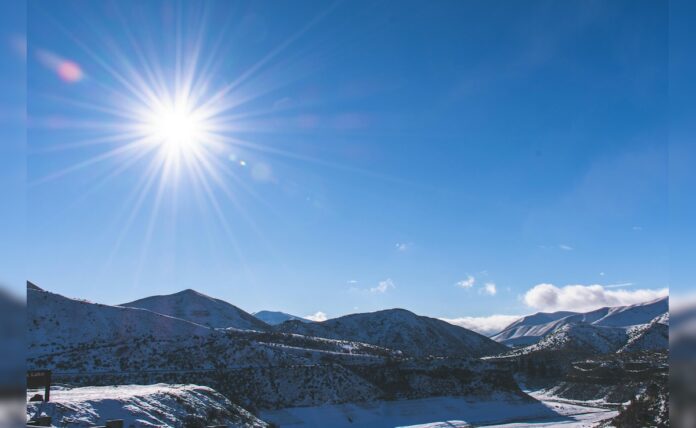Scientists have finally solved the long-standing mystery of the Sun turning blue in Earth’s atmosphere almost 200 years ago. A massive volcanic eruption in 1831 has been attributed as the reason for the colour change as massive plumes of sulfur dioxide were thrust into the atmosphere, causing global cooling and forcing our planet to play host to some weird climatic conditions that year.
A study published in the journal Proceedings of the National Academy of Sciences (PNAS) has found that the Zavaritskii volcano on the remote, uninhabited island of Simushir – now a contested territory between Russia and Japan, was the ground zero of the eruption that changed the planet.
Scientists at the University of St Andrews, Scotland, analysed ice core records from the 1831 event to confirm their findings. They added that there was no written record of direct observation from the 1831 eruption as the island on which the eruption took place is remote and has remained largely uninhabited.
“The moment in the lab when we analysed the two ashes together, one from the volcano and one from the ice core, was a genuine eureka moment,” study co-author Will Hutchison said in a statement.
“We analysed the chemistry of the ice at a very high temporal resolution. This allowed us to pinpoint the precise timing of the eruption to spring-summer 1831, confirm that it was highly explosive, and then extract the tiny shards of ash,” Mr Hutchison added.
While the team solved the mystery of the 1831 eruption and its impact on the Sun, Mr Hutchinson noted they still didn’t have any instrumentation mentioning the volcanic activity on the faraway island.
“If this eruption were to happen today, I don’t think we’d be much better off than we were in 1831. It just shows how difficult it will be to predict when and where the next big climate-changing eruption will come from.”
Also Read | One-In-Six Chance Of Massive Volcanic Eruption This Century. Will It Trigger Climate Chaos?
Massive volcanic eruptions
1831 was not the only time when a volcanic eruption had a global impact. In 1815, the eruption of Mount Tambora in Indonesia led to a year without summer on the planet. The eruption released 24 cubic miles of gases, dust, and rock into the atmosphere, causing global temperatures to plummet, eventually leading to a 1-degree-Celsius cooling of the Northern Hemisphere.
Scientists warn that there is a one-in-six chance that a similar volcanic eruption that could disrupt life on the planet will take place this century.
The economic repercussions of a massive eruption could be staggering, with losses potentially reaching into trillions. Moreover, any cooling effect would be momentary, with the planet soon returning to its warming trajectory due to ongoing greenhouse gas emissions.




